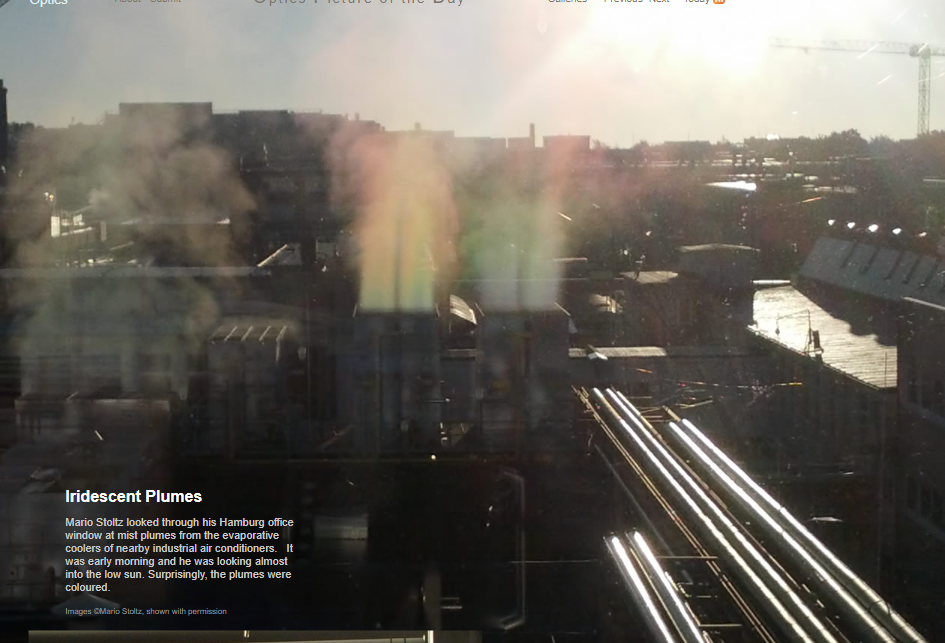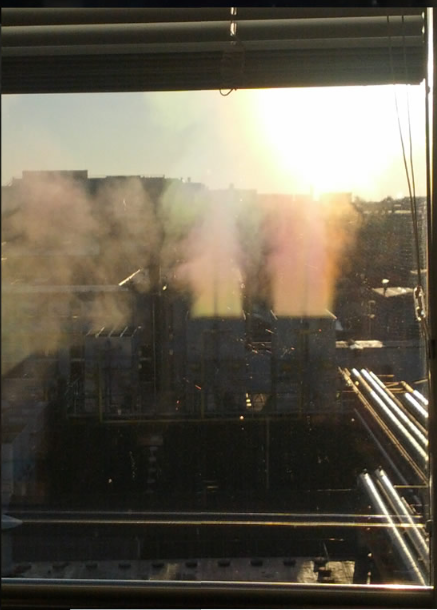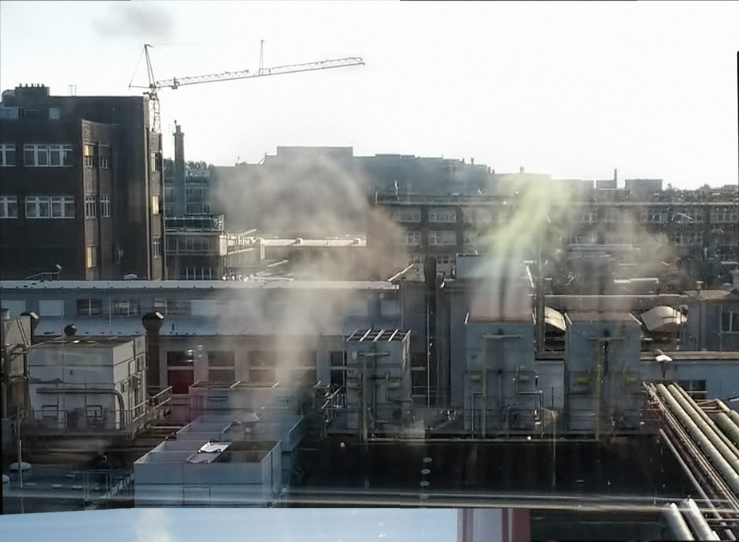Air Conditioner Iridescence - OPOD
Air Conditioner Iridescence - A Captivating Phenomenon
Have you ever looked out your window and noticed a burst of vibrant colors emanating from the plumes of mist produced by nearby air conditioners? If so, you have witnessed a captivating atmospheric optics phenomenon known as air conditioner iridescence. This stunning display occurs when freshly condensed mist droplets diffract sunlight, creating a beautiful array of iridescent colors.
When sunlight encounters these tiny droplets, it scatters mainly from the surface of the drops. As the scattered waves interact, they form a diffraction pattern, resulting in the mesmerizing iridescent hues that we see. The cleanest and most colorful patterns are formed when all the droplets have the same size. In contrast, a mixture of droplet sizes leads to an overlapping mixture of diffraction patterns, resulting in a whitish blur.
The size of the mist droplets plays a crucial role in the formation of these vibrant colors. Initially, freshly formed droplets tend to have similar sizes, creating distinct and well-defined patterns. However, as the mist ages, collisions between droplets and vapor exchange cause their average size to increase and the size distribution to widen. Consequently, the once well-defined patterns transform into a more diffuse and less colorful display.
The appearance of these iridescent plumes is highly dependent on ambient air temperature and humidity. The interplay between these two factors influences the size and distribution of the mist droplets, ultimately determining the intensity and variety of colors observed. On cooler mornings with higher humidity levels, you are more likely to witness a spectacular show of vibrant hues dancing in the air.
Interestingly, air conditioner iridescence is not limited to just the immediate vicinity of the cooling units. On certain occasions, these colorful displays can be observed high up in the sky, creating an enchanting spectacle for those lucky enough to witness it. This phenomenon has been documented in various locations around the world, with individuals capturing awe-inspiring images of the iridescent plumes stretching across the heavens.
Air conditioner iridescence serves as a reminder of the intricate and captivating nature of atmospheric optics. By simply observing the mist plumes from these cooling units, we can gain a deeper appreciation for the phenomena occurring in our atmosphere. The ever-changing interplay between sunlight, water droplets, and atmospheric conditions creates a dynamic canvas of colors that delights and intrigues both scientists and casual observers alike.
In conclusion, air conditioner iridescence is a fascinating phenomenon that occurs when sunlight interacts with mist droplets produced by industrial air conditioners. The diffraction of light by these droplets results in a mesmerizing display of iridescent colors. The size and distribution of the droplets, influenced by ambient temperature and humidity, determine the intensity and variety of colors observed. So, the next time you spot these colorful plumes, take a moment to marvel at the wonders of atmospheric optics unfolding right before your eyes.

Iridescent Plumes
Mario Stoltz looked through his Hamburg office window at mist plumes from the evaporative coolers of nearby industrial air conditioners. It was early morning and he was looking almost into the low sun. Surprisingly, the plumes were coloured.
Images ©Mario Stoltz, shown with permission


Freshly condensed mist droplets diffract sunlight to form the iridescent colours.
Sunlight scatters mainly from the drop surface and the scattered waves interact to form a diffraction pattern.

The cleanest and most colourful pattern forms when all the drops have the same size. A mixture of sizes gives an overlapping mixture of diffraction patterns that tends to a whitish blur.
Freshly formed drops have similar sizes. As the mist ages, collisions and vapour exchange between droplets increases their average size and widens the size distribution.

The colours showed on several mornings.
Ambient air temperature and humidity matter.

Colours show high up in the sky
One of the earliest sightings.
Note: this article has been automatically converted from the old site and may not appear as intended. You can find the original article here.
Reference Atmospheric Optics
If you use any of the definitions, information, or data presented on Atmospheric Optics, please copy the link or reference below to properly credit us as the reference source. Thank you!
-
<a href="https://atoptics.co.uk/blog/air-conditioner-iridescence-opod/">Air Conditioner Iridescence - OPOD</a>
-
"Air Conditioner Iridescence - OPOD". Atmospheric Optics. Accessed on November 26, 2024. https://atoptics.co.uk/blog/air-conditioner-iridescence-opod/.
-
"Air Conditioner Iridescence - OPOD". Atmospheric Optics, https://atoptics.co.uk/blog/air-conditioner-iridescence-opod/. Accessed 26 November, 2024
-
Air Conditioner Iridescence - OPOD. Atmospheric Optics. Retrieved from https://atoptics.co.uk/blog/air-conditioner-iridescence-opod/.